Intro:
For more exploration into art styles and movements that I could apply within my project to relate to the theme of ‘Union’ I looked into montaging and collaging. With montaging and collaging being a method of creation to bring different things together, I find they are interesting art styles to use, to present the theme of ‘Union’. Whilst looking into the art styles, I also looked into artists who have created such works of montaging and collaging, that I could then take influence from in my own work.
Definitions:
Montaging – an assembly of images that relate to each other in some way to create a single work or part of a work of art.
Collaging – the technique and the resulting work of art in which pieces of paper, photographs, fabric and other ephemera are arranged and stuck down onto a supporting surface.
Brief History:
Montaging:
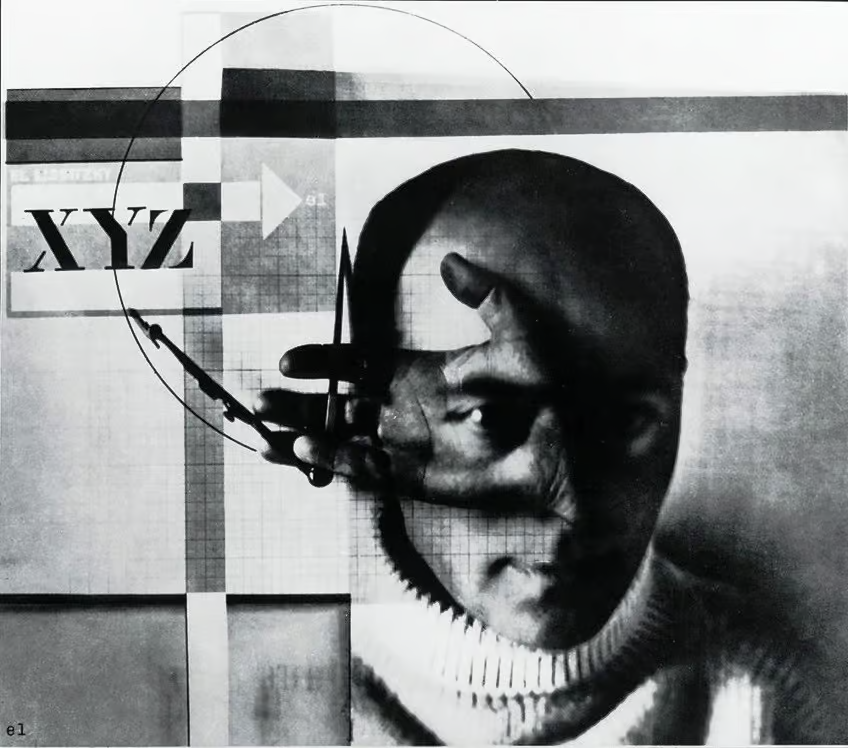
El Lissitzky, The Constructor, 1924.
Montaging in photography, also known as photomontage, Is the manifestation of imaginative and artistic construction. The style seems to combine various photographic elements to create thought-provoking and impactful imagery to create challenges within the viewers mind on their perceptions of the art and reality.
Its origins trace back to the early 20th century, where the artist movement of avant-garde brought bold experimental art styles such as German impressionism and Soviet constructivism. With massive global events such as both World Wars causing mass climates of political and social change art took influence from this in its presentation. Out of this came movements such as Dadaism which photomontage is closely influenced from. Like with Dadaism, photomontage offered a rejection of traditional artistic norms and opted to choose the surreal style which promoted anti-establishment views and unconventional perspectives.
Artists of photo-montaging, are not confined in themes, but rather open to any subject they wish, however, often bound in the spectrum of dream-like imagery and surrealism.
Collaging:

Man Ray, Dora Maar, 1936.
Collage photography is the remixing and fragmenting of visual information from various sources to create a compelling narrative or produce a statement from the art piece.
Originating in France, collage came about into the modern art scene in 1911, with pioneering artists such as George Braques and Pablo Picasso bringing it into the mainstream platform. Like montage, collage is a technique to interpret reality by creating a piece of art, which in itself is a reproduction of reality. By using physical objects within a collage such as newspaper clippings it creates a precise image behind the work, as a message or reference to current events. Collaging Within photography can be found to merge into photomontage. By being able to combine things that aren’t physically possible, it creates visually impressive compositions. Examples of this within photography Include overlaying, impossible angles and rearranging objects within an image to produce surreal effects.
Methods of achieving this can be done through digital alteration such as with using tools on photoshop, or the manual process of using slow shutter-speeds to produce surreal effects within an images contents.
Montage and Collage artists:
John Stezaker:
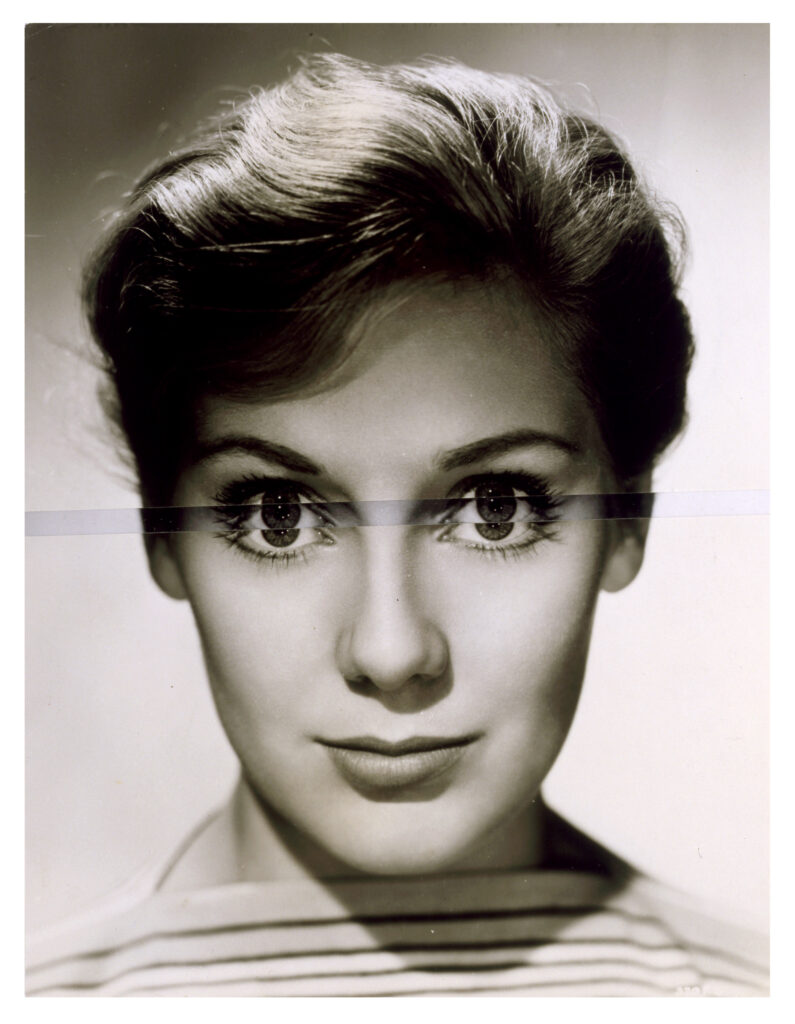
John Stezaker, born in Worcester, 1949, is a British artist most known for his works of re-inventing classic movie stills, vintage postcards, books and illustrations to create fascinating collages with entire new meanings. By providing a new, modernistic, take on a classical image, Stezaker does this by altering its appearance through repetitive sections, or by creating a whole new image entirelt with thought-provoking juxtapositions. Stezaker’s work slices and sticks existing images to produce a creatively alternative art style, featuring influences from other styles such as Surrealism, Dadaism and found art.
His work has been featured world-wide and has earned him numerous awards for his creativity. His series ‘Dark Star’ is an example of this, being a display of his unique style and all its variations, which can be seen to blend montage and collage In a engaging way.
“John Stezaker’s work re-examines the various relationships to the photographic image: as documentation of truth, purveyor of memory, and symbol of modern culture.”
“Stezaker focuses on the concept of portraiture, both as art historical genre and public identity. Using publicity shots of classic film stars, Stezaker splices and overlaps famous faces, creating hybrid ‘icons’ that dissociate the familiar to create sensations of the uncanny. Coupling male and female identity into unified characters, Stezaker points to a disjointed harmony, where the irreconciliation of difference both complements and detracts from the whole. In his correlated images, personalities (and our idealisations of them) become ancillary and empty, rendered abject through their magnified flaws and struggle for visual dominance.”
– SAATCHI Gallery
Within his work, the theme of Union can be found through the explorations of subjects such as Identity which both Stezaker uses and what I have chosen to include and represent through my work.
Mood board:
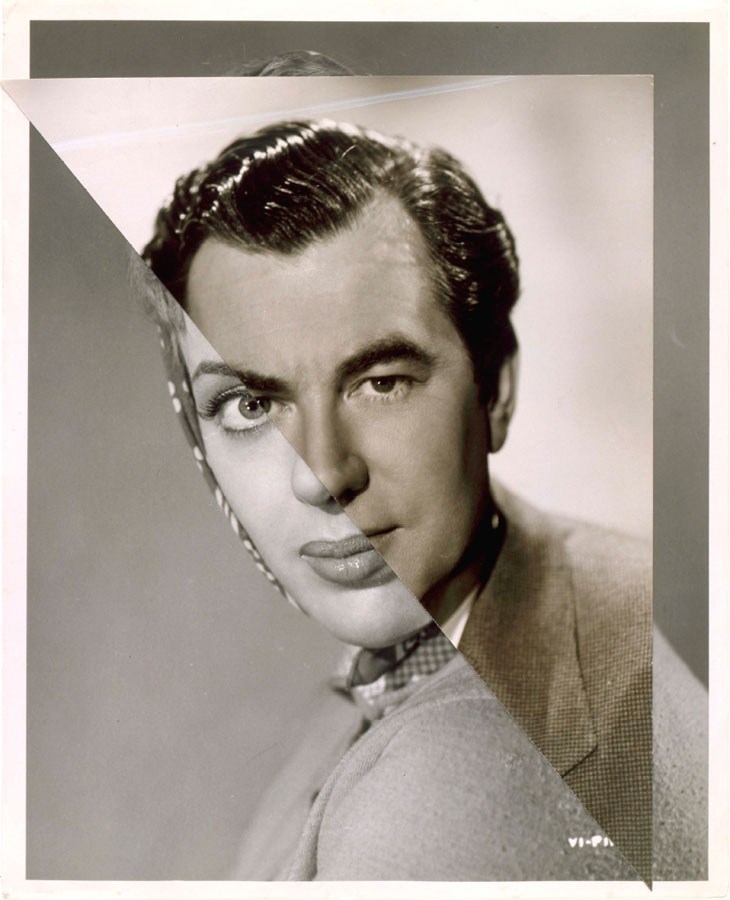
John Stezaker, Marriage VIII, 2006.
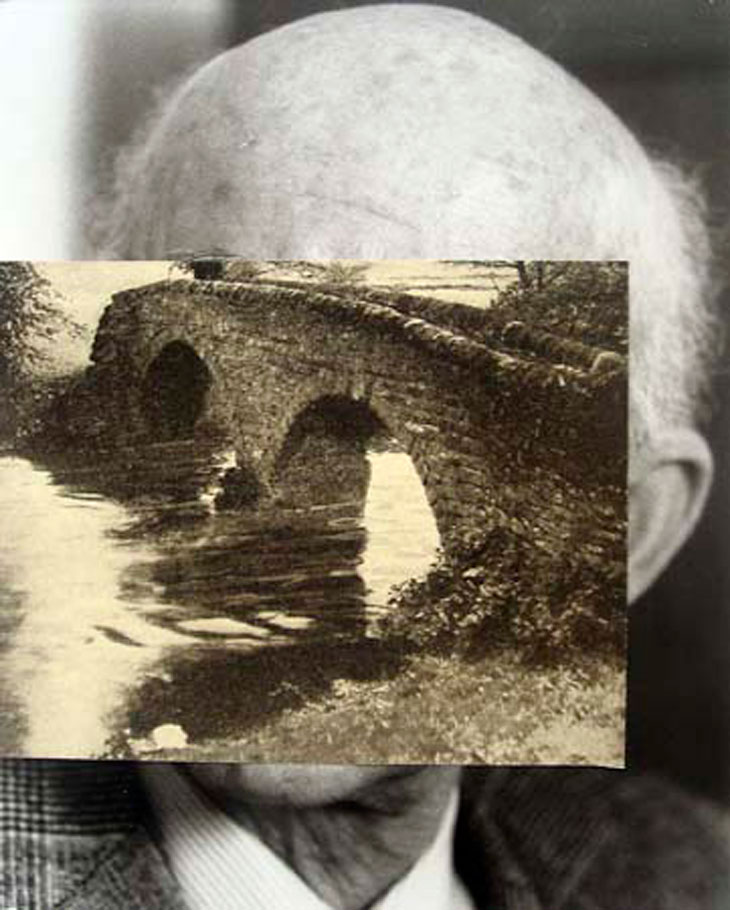
John Stezaker, Old Mask II, 2006.

John Stezaker, Blind I, 2006.

John Stezaker, She (Film Portrait Collage) III, 2008.
Image Analysis:
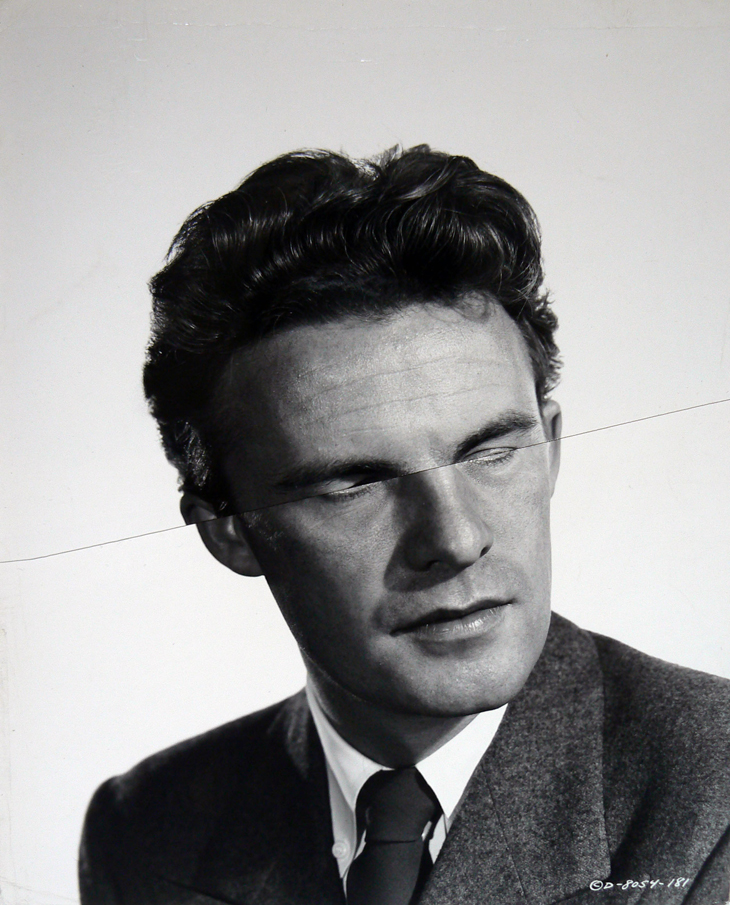
Visual –
With the original image being taken from old Hollywood headshots, the tone of Stezaker’s adapted Images such as this one, make use of Rembrandt lighting to highlight the facial features and add shadow to create a contrast of ‘masculine features’ such as a sharp jaw line and brow. In contrast to the photographing of women at the period, they where photographed more-so in chiaroscuro or gauze filtered light to, highlight beauty, or symmetrical facial features. With the face being the focus, the texture of this image is given more detail. The shape and form is additionally added along side this. With a sliced line added by Stezaker, this adds an fascinating effect to the image as although having a portion of the face removed, disbalancing the images original harmony, it does also invoke a sense of believability due to the facial symmetry, which in itself can be a new sort if harmony.
Technical –
As stated, Stezaker’s adapted images feature the classical lightening techniques associated to the classic Hollywood era. Rembrandt and Chiaroscuro for example are achieved through a strong artificial (or possibly natural) light source pointed from a specific direction to create shadows on the face. With these images usually taken on a short depth of field this is to highlight the details of the subject. Additionally, being taken on cameras from the 1940s, 50’s and 60’s the ISO would have a higher sensitivity, producing a grainer image which can be seen in images such as this.
Contextual –
Being alternated Hollywood head-shots, Stezaker breaks down the historical context of the images whilst also producing reflections of identity through them, bringing a deeper insight into its ambiguous meanings. With his images covering both men and women, it can be taken further into a study of gender and with images featuring a blend of both male and female actors, It poses questions as what can unify them?
Conceptual –
What I find, best defines Stezaker’s concept behind his images is the summary of his work by SAATHCI gallery: “Stezaker points to a disjointed harmony, where the irreconciliation of difference both complements and detracts from the whole.” By unifying two fragmented images to create one whole, I find this creates an enthralling art style which Stezaker has seemed to master.
Christian Marclay:

Christian Marclay, Untitled (crying),2020.
Christian Marclay, born in California but raised in Geneva, Switzerland is a London-based artist who’s innovative work surrounds visual and composing samples of fragmented aesthetics of popular culture to create new forms and meanings through methods such as photography, printmaking and collaging. Notable works of his that feature elements of montage and collage can be seen with his 1991-92 series, Body Mix. Within this series Marclay created blends of album cover sleeves by stitching them together, blending both vinyl art and artist genres of the music, mixing low and high culture.
The mixing of these vinyl covers tended to unify to resemble a human figure, which can be seen as a way of looking at how music can form someone’s identity. This was a similar concept I took when creating some of my own images such as the recreation of the album cover and the collection of images of myself holding various record covers.
like with Stezaker, Marclay’s work also explores male and female identity as both are unified through the mixing of record sleeves merging their anatomies.
“Art is all in the details.”
– Christian Marclay
Mood board:

Christian Marclay, Body Mix, 1991-92.
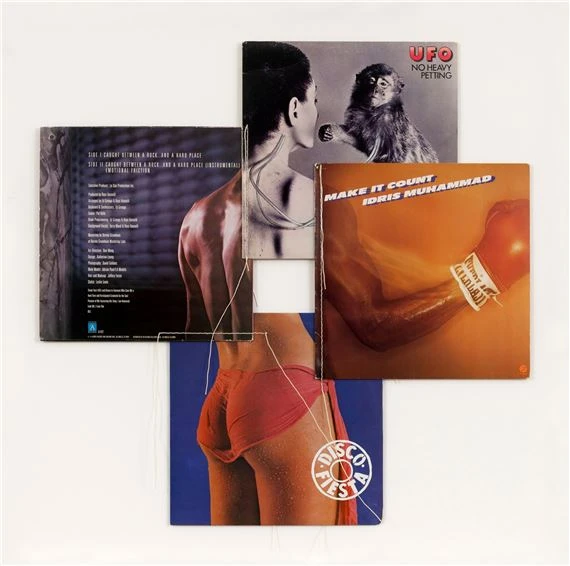
Christian Marclay, ‘No Heavy petting’, 1991.
various other examples from ‘Body Mix’:

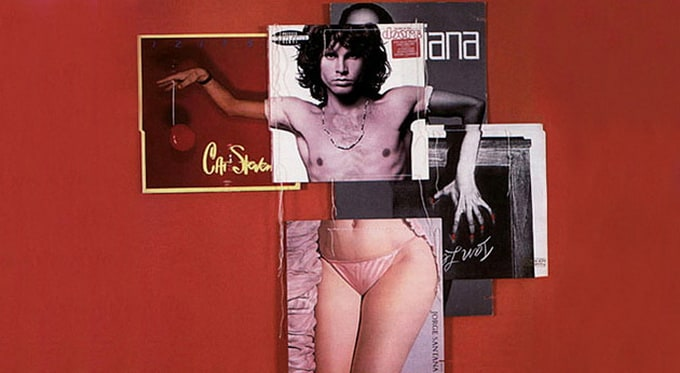
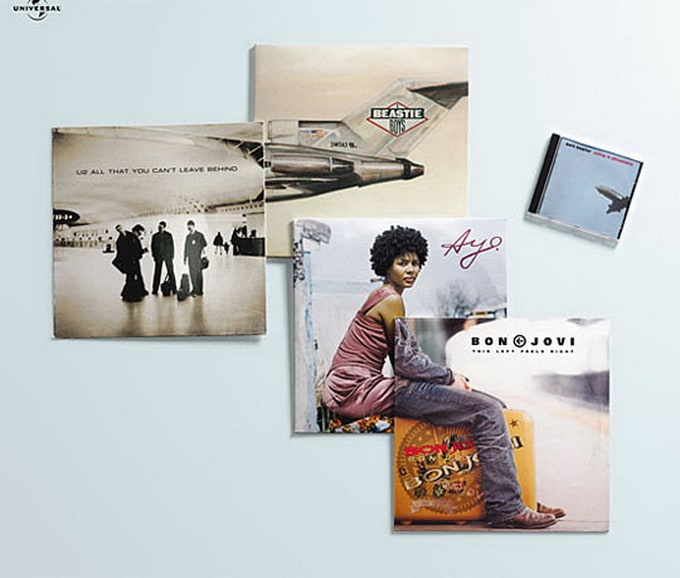

Image Analysis:
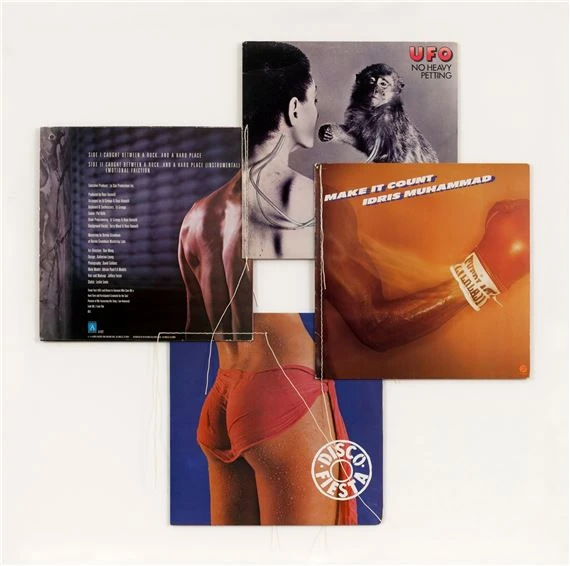
Visual –
Like with the various music genres, Marclay’s work features an array of colour with one or two kept similar to match a visual aesthetic. With this mix also comes a mix of tone from the darker more detailed black and white album cover to the more bright and vibrant others that surround it. Captured from a birds-eye-view the arrangement of the images to resemble someone, almost ads a three-dimensional effect to the constructed person within the image.
Technical –
With soft studio lights, this prevented minimal amounts of shadows on the album covers to try am seamlessly blend them together. With a fairly sharp shutter-speed, this allows a a perfectly exposed image which allows the individually colourful album covers to blend and merge and outline themselves against the plain backgrounds. By further having a neutral white balance, this allows for the art to produce its own visual contrasts.
Contextual –
Behind his work, Marclay has spoken about how he enjoys creating new art from other forms of art that already exist. “The process of editing is what I enjoy most – putting the pieces together and making sense out of them.” – Christian Marclay. His work is a clear example of both an effective collage and montage, as his concept strikes the structure of what defines them.
Conceptual –
His work can be said to explore and show how identity can be made through music taste. Furthermore, gender is another subject explored within his work with a merge of male and female body parts used to construct a figure, creating ambiguous meaning to its intentions. further more, his images can seem to construct a story through a blend of work, whether it be about someone travelling or depicting Christ’s Crucifixion.
Rafal Milach:
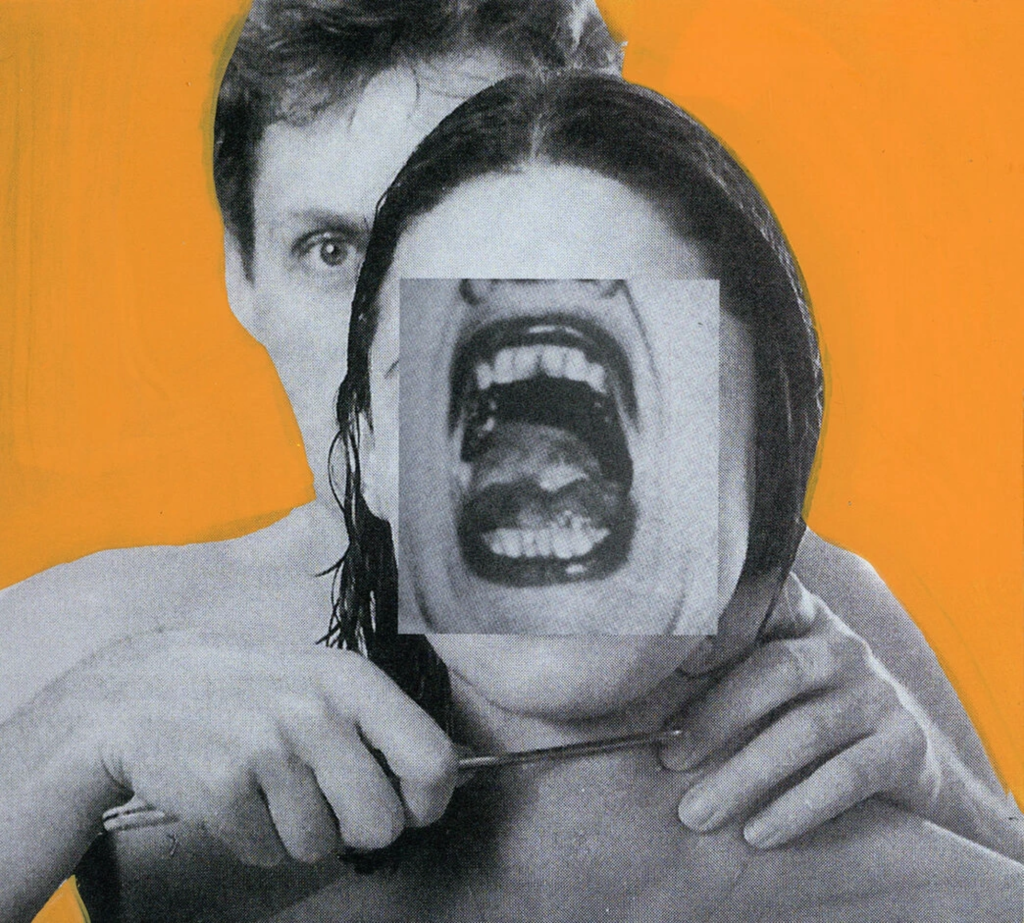
Rafal Milach, ‘Reverse’, 2024.
Rafal Milach, who was born in Poland, is a visual artist, photographer and educator who’s work focuses on tension between society and its power structures. His series ‘Reverse’ is a interesting modern art piece, making use of collaging and the aesthetic of film grain to produce a visually inviting study into the ‘standards of beauty’ and the way that the body, mainly that of women, is represented and perceived by audiences. Milach’s work criticises the strict rigor of body representation within the fashion industry and breaks down, distort and undermine the ‘ideal’ of how the body is presented. By making use of well-known art works from art and pop culture images, Milach attempts to emphasise the representations to bring to light the oppressive nature behind them. With his images made from montaging and collaging his own images and ones borrowed from popular culture, it creates both a simplistic yet contrastive art piece.
Mood Board:
Photos are from his series ‘Reverse’. Here they are presented in a large collection of images within an over-sized book in the collection of tens of thousands of books at 7L – Karl Lagerfeld’s library.


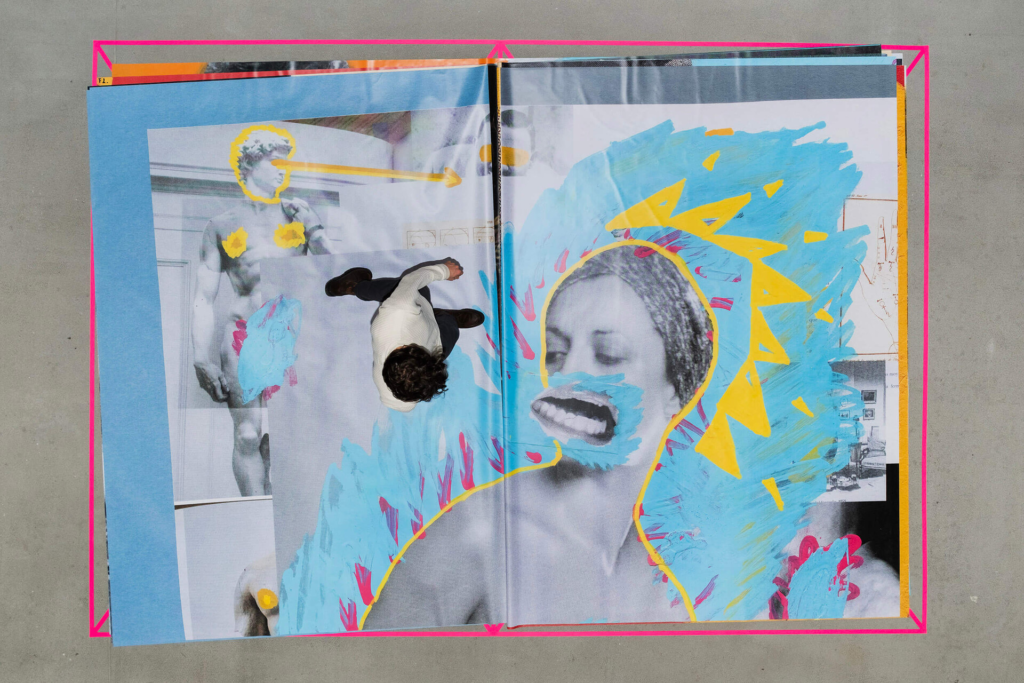
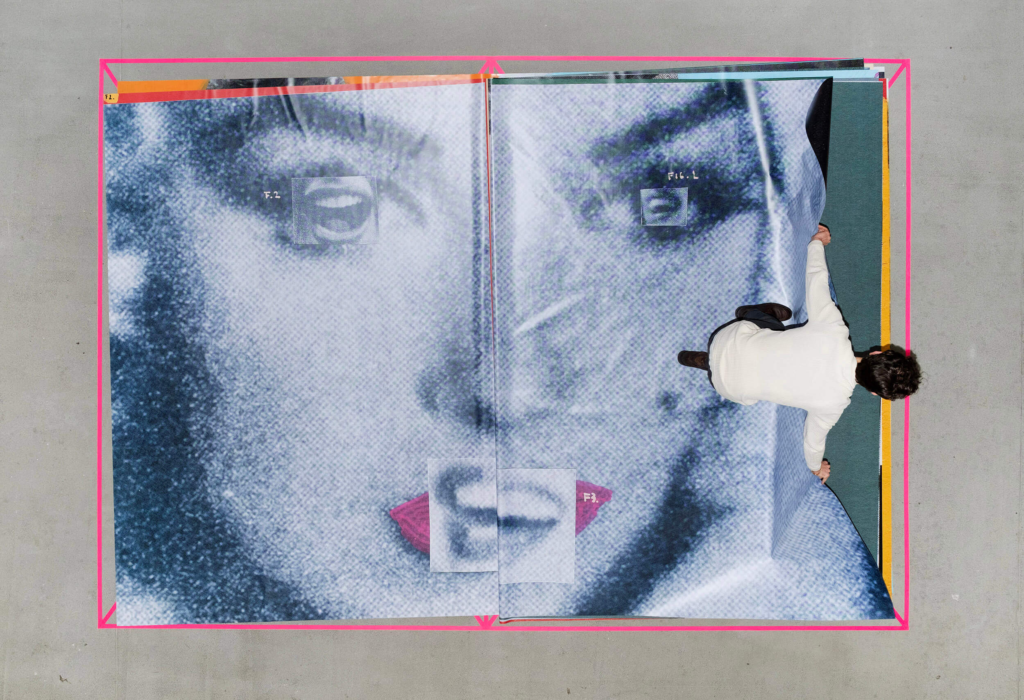
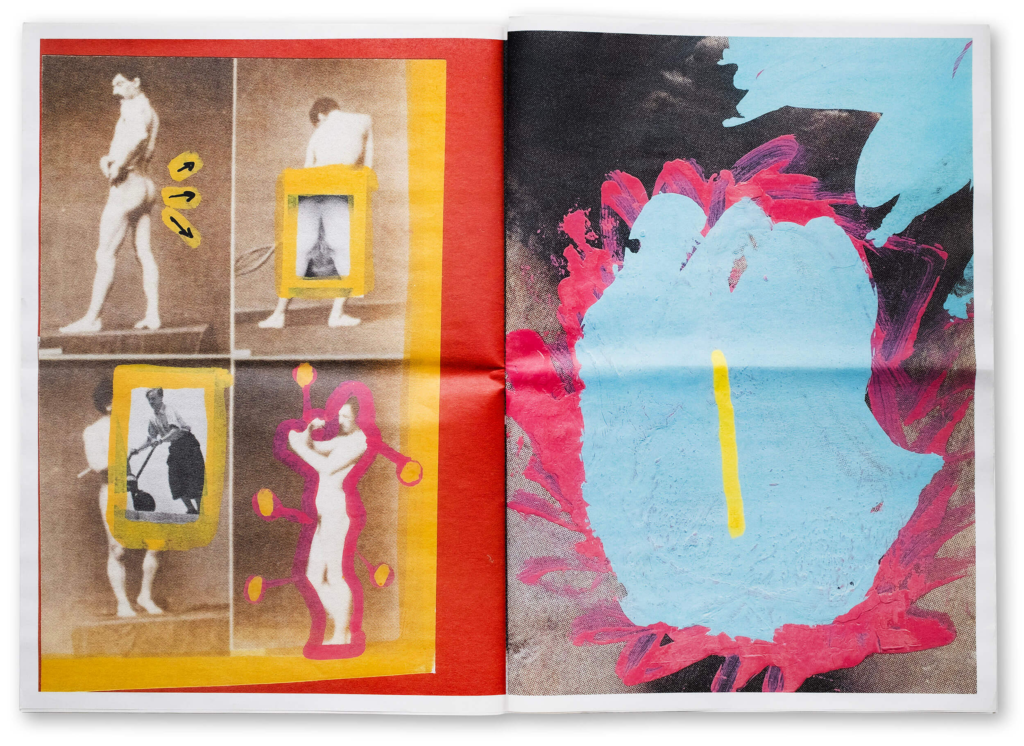
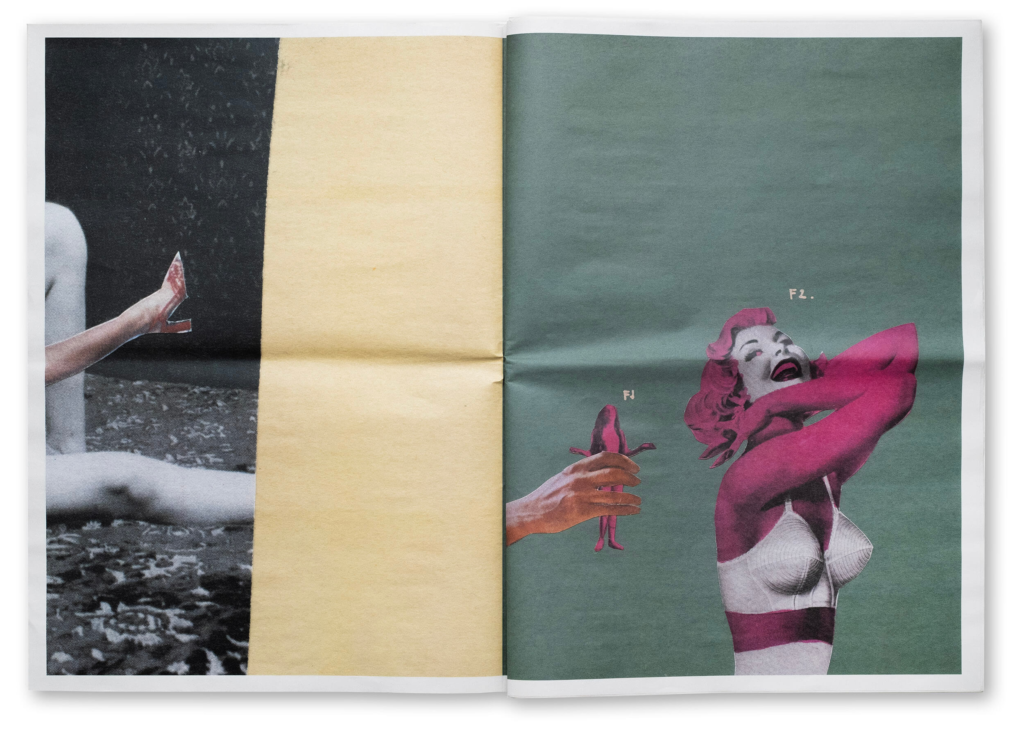
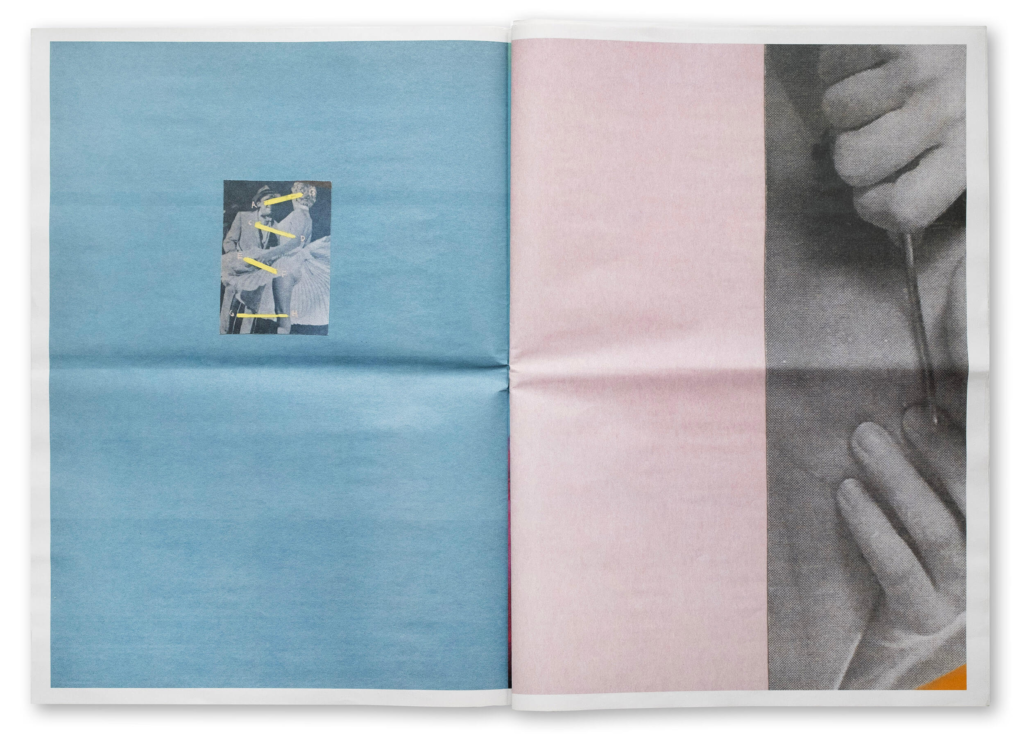
Image Analysis:
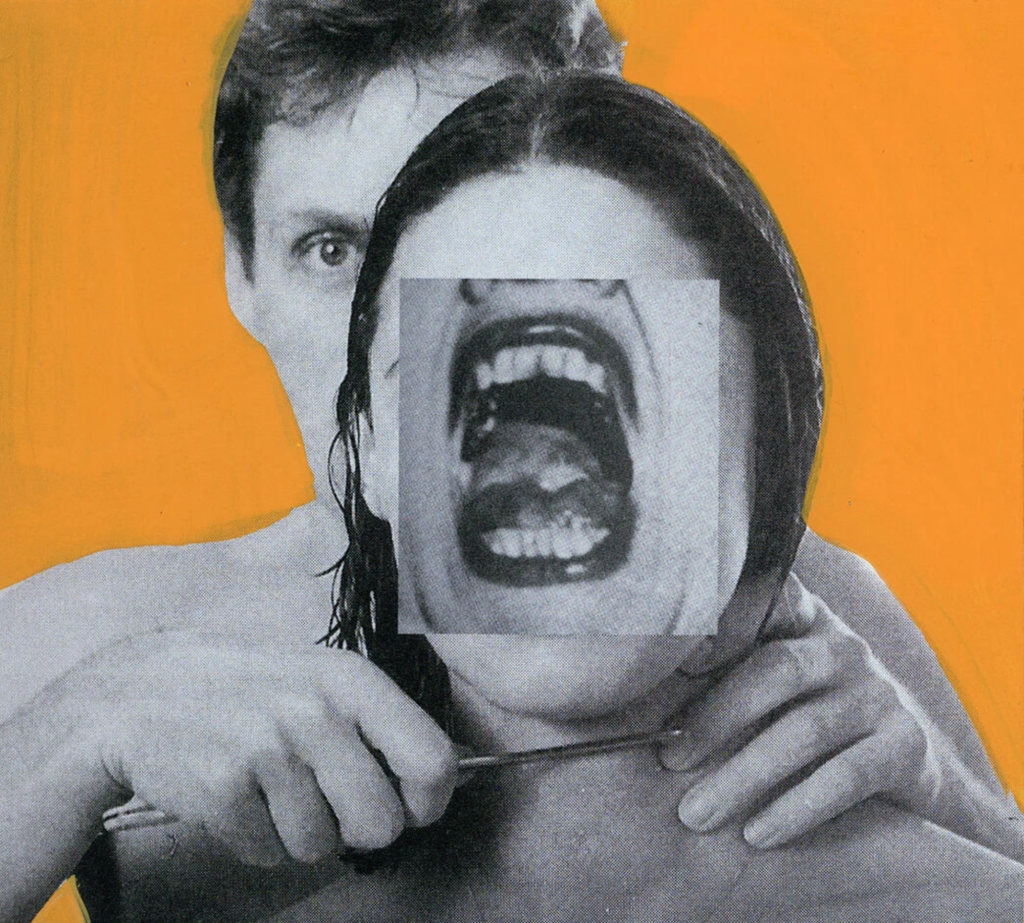
Visual –
With the pale, stone-grey coloured photographs contrasting to the more vibrant colours chosen by Milach, This creates an isolated effect to the photograph, drawing more attention to it. With the grainy film texture added to his photos, this creates a vintage effect which alongside the images of old pop-culture images adds to the overall aesthetic of his work as well as the conceptual basis of looking back towards old idealisms in the history of art, fashion and photography.
Technical –
His images seem to make use of strong but also soft, studio lightening to replicate that of the vintage images included in the series. His images are mainly taken at mid-shot level or on specific points of the body in a close-up. With no motion in the images, the shutter-speed can be said to be fairly quick, furthermore with a lot of grain between the photos, this could have obtained through a higher ISO.
Contextual –
Rifal Milachs work ‘Reverse’, explores through collages the ‘standards of beauty’ and the way the body, mainly that of women, is perceived and represented within things such as the fashion industry and other various mediums such as art and photography. With various aspects of the work featuring the inclusion of old pop-culture images, Milach can be said to attempting to challenge traditional views on what beauty is defined as.
Conceptual –
For this project, his concept is the exploration of the perceptions of what has defined the ‘standard of beauty’ and create an open to criticism those perceptions that have been made in things such as the fashion industry and photography. Milach’s project can be applicable to the theme of identity with the subjects of his work being both stereotyped and countertypeed to their traditional presentations.
